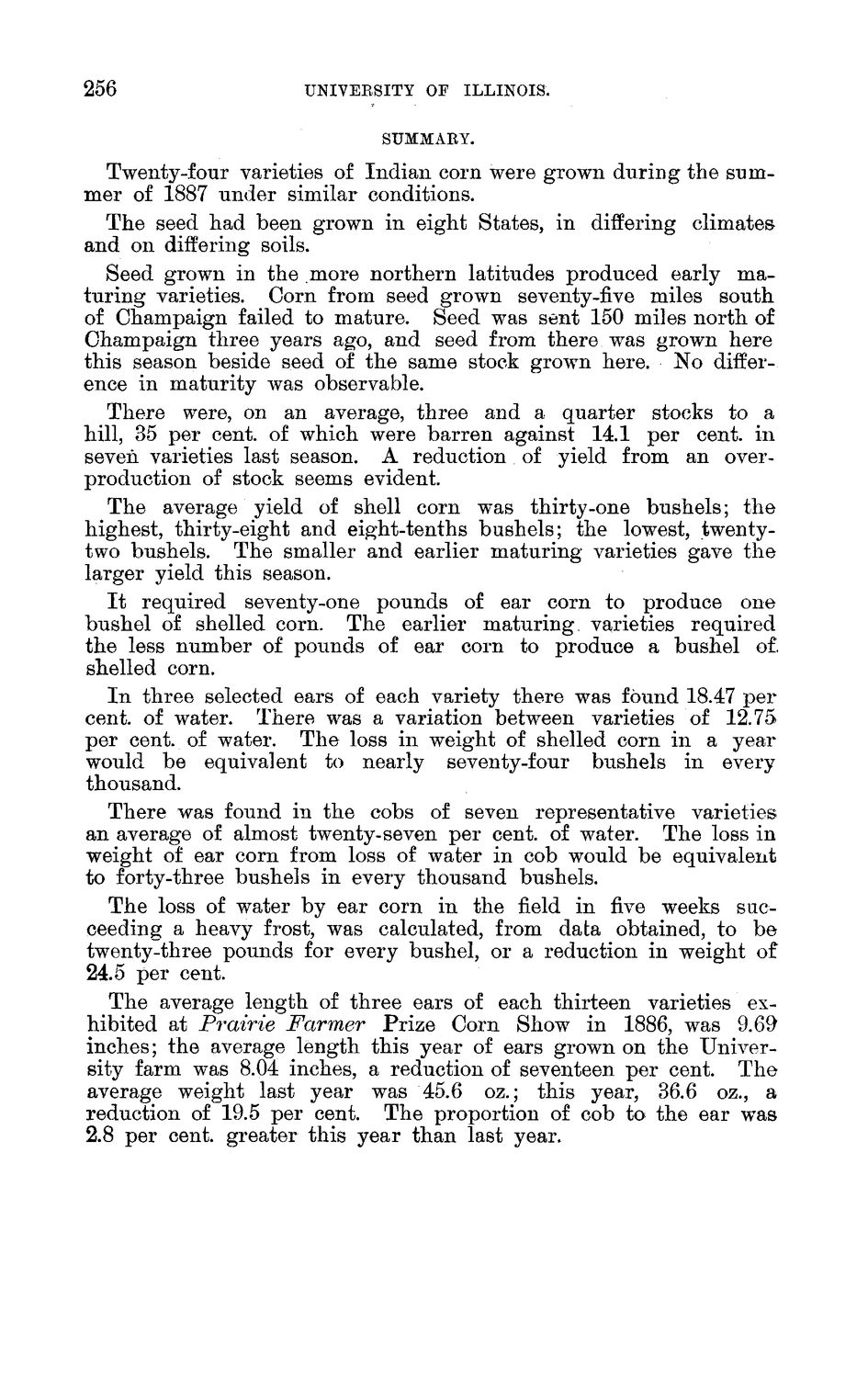| |
| |
Caption: Board of Trustees Minutes - 1888
This is a reduced-resolution page image for fast online browsing.

EXTRACTED TEXT FROM PAGE:
256 UNIVEBSITY OF ILLINOIS. SUMMAEY. Twenty-four varieties of Indian corn were grown during the summer of 1887 under similar conditions. The seed had been grown in eight States, in differing climates* and on differing soils. Seed grown in the more northern latitudes produced early maturing varieties. Corn from seed grown seventy-five miles south of Champaign failed to mature. Seed was sent 150 miles north of Champaign three years ago, and seed from there was grown here this season beside seed of the same stock growTn here. No difference in maturity was observable. There were, on an average, three and a quarter stocks to a hill, 35 per cent, of which were barren against 14.1 per cent, in seven varieties last season. A reduction of yield from an overproduction of stock seems evident. The average yield of shell corn was thirty-one bushels; the highest, thirty-eight and eight-tenths bushels; the lowest, twentytwo bushels. The smaller and earlier maturing varieties gave the larger yield this season. I t required seventy-one pounds of ear corn to produce one bushel of shelled corn. The earlier maturing varieties required the less number of pounds of ear corn to produce a bushel of. shelled corn. I n three selected ears of each variety there was found 18.47 per cent, of water. There was a variation between varieties of 12.75 per cent, of water. The loss in weight of shelled corn in a year would be equivalent to nearly seventy-four bushels in every thousand. There was found in the cobs of seven representative varieties an average of almost twenty-seven per cent, of water. The loss in weight of ear corn from loss of water in cob would be equivalent to forty-three bushels in every thousand bushels. The loss of water by ear corn in the field in five weeks succeeding a heavy frost, was calculated, from data obtained, to be twenty-three pounds for every bushel, or a reduction in weight of 24.5 per cent. The average length of three ears of each thirteen varieties exhibited at Prairie Farmer Prize Corn Show in 1886, was 9.69 inches; the average length this year of ears grown on the University farm was 8.04 inches, a reduction of seventeen per cent. The average weight last year was 45.6 oz.; this year, 36.6 oz., a reduction of 19.5 per cent. The proportion of cob to the ear wTas 2.8 per cent, greater this year than last year.
| |